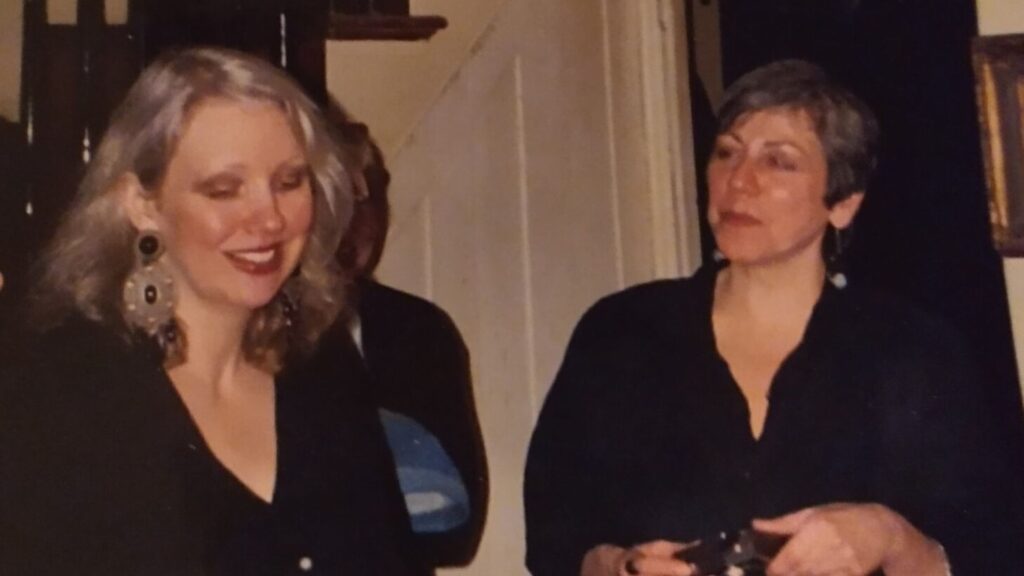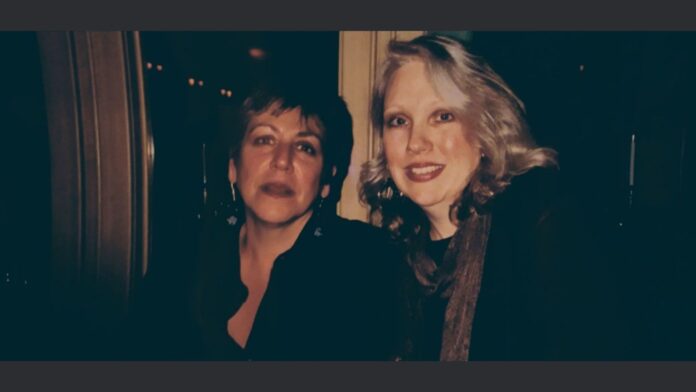It’s LGBTQ History Month. Over the years, I have written about a myriad of figures for various publications, including PGN. Some are iconic, like James Baldwin and my longtime mentor, Audre Lorde. Others, like Joan Nestle, who co-founded the extraordinary Lesbian Herstory Archives a half-century ago in her apartment in New York City, are themselves historians. I have written about the creatives, like photographer Tee A. Corinne and the poets, like bell hooks and of course the activists, like Angela Davis and Pauli Murray.
Rewriting the revisionism
And now I am writing about myself and my wife—because part of what I have learned from my own years studying history at Temple University and the University of Pennsylvania as well as from my decades as an activist and journalist, and from my friends who are Black and Latinx scholars, is that for women and people from historically marginalized communities, history has been told in ways that are often misleading, largely inaccurate and consistently erase many of the most critical aspects of those people’s lives.
The role of colonization, in all its forms, in shaping how history is recorded can never be dismissed or minimized—which is why sharing our stories, whether through oral, video or written histories, is essential. In February, I interviewed E. Patrick Johnson, the 2023 David Kessler scholar for CLAGS, the Center for LGBTQ Studies—the first university-based research center in the U.S. dedicated to the study of issues of concern to the LGBTQ+ communities.
Johnson is also an ethnographer doing groundbreaking work in oral history. His work on Black gay men in the South is critical as it is enlightening: as he explained to me, these oral histories give a sense of the lived experience of these gay people in their time, in their milieu. We need to focus on capturing our stories, not just with images like a Playbill, but by conveying the vivid experience of what it was like at that time—the emotions of watching the play, the impact of the words, and how the performances resonated in that moment in history.
The personal is political
Oct. 6 would have been my 25th anniversary with my wife, the artist and design professor Maddy Gold. It should have been a day of celebration with friends and family. Instead, it was a day of mostly solitary mourning, in which I thought about what we should have been doing, if only cancer—which I am battling myself now—hadn’t taken her from me far too soon.
What would I have bought her for our silver anniversary? Over the years, I made her earrings and scarves, quilts and afghan blankets. She used to tell me how much she loved my “happy hands at home” craft work, although she hated sitting at craft fairs with me as I sold my wares and only agreed to go a few times.
What would she have given me? I hope a new painting, but perhaps a ring. Maddy bought me a ring in high school from Harry North Jewelers at 20th and Sansom. It was my birthstone—amethyst—and it was silver. An ornate poison ring. It was the first piece of real jewelry I had ever been given. I kept it in its little jeweler’s box in the velvet bag that kept the silver from tarnishing.
I’m not sure where she got the money to buy such a gift as a high school sophomore, but I treasured it and still have it. I’m still, at times, not even sure how we lived these lesbian lives as teenagers at a time when it was still so rare and even dangerous to be out. And yet there we were—these two brave girls—charting new territory in everything we did together.
Maddy and I had a long and complicated history that began when we were teenagers and met on the bus ride from my home in Germantown and hers in Mt. Airy to the Philadelphia High School for Girls. I was her first girlfriend, first love and—as she told me again and again over the years—the love of her life.
Since her untimely death, I have worked to memorialize Maddy and her life as a brilliant and inspirational teacher—her greatest love after me was teaching—and her work as a renowned artist.
It’s taken me some time to understand both my role as historian and my role as widow and how they coalesce. I was helped by the work of poet Mary Oliver. After the death of her partner of 40 years—photographer Molly Malone Cook—Oliver published a book, “Our World,” that was a memorializing their lives together. It’s a beautiful tribute to their love.
I began to write essays about Maddy’s and my life together after that, coming to the realization that our history was in fact LGBTQ+ history. As teenagers post-Stonewall, we were the first generation to break ground as out queers forging a path in the political flux of this newly created and as still ill-defined post-Stonewall era.

Our stories, ourselves
Maddy’s and my love story was in fact interrupted by those times as I would be expelled from our high school for being an open lesbian and thus a “bad moral influence” on the other 3,000 girls at the school. Or so the principal told my father as she expelled me from the iconic school from which my mother, grandmother and sister all graduated.
The lesbian pulp novels by Ann Bannon and others that I had found and purloined from a home for which I babysat and passed around to friends at school were deemed subversive and deviant. They stood as a testament to my perversion and the danger I posed as an out lesbian in a school full of lesbians in hiding as both students and faculty. There were closeted lesbian teachers still at the school from when my mother attended, yet there was no one to stand up for me.
Why we must tell our stories
Maddy’s and my story is a story of the movement itself. And of the battles fought and the trajectory of our wins and losses.
Maddy helped propel my early teenage activism, alerting me to a meeting of Radicalesbians in Philadelphia, by stuffing a page torn from the weekly underground newspaper, “The Drummer,” in my locker at school. It detailed when this first meeting would be held. I had to sneak out of the house and take the bus and subway into town on a school night, but I got there. At 14, I was the youngest person there and for years was referred to as “jailbait” by other members of the group of which I was a member in the local chapter for years. Through Radicalesbians, I became involved in local and national lesbian and gay activism as a teenager, which continued throughout my adult life.
Homophobia did not stop with Stonewall, of course, and throughout our decades together as adults, Maddy and I faced repeated issues with discrimination. She was summarily fired from one teaching position in New Jersey under an obscure morals clause when it was discovered she was gay. She was eased out of another long-time teaching position at a local university when a new provost found her open lesbianism concerning and her support for students coming out to her to be promoting homosexuality.
I wanted to sue both the school in New Jersey and the college here, but she feared—rightly in the still-narrow art world in this large metropolis—that it might keep her from finding another teaching job.
Over our years together, we fought discrimination in many venues and circumstances. We fought with neighbors over being gay. We dealt with homophobia in hospitals. In restaurants. In a hotel.
It was a stressor in our relationship that we rarely even discussed because it was pointless. It was an immutable fact of our lives.
Our LGBTQ+ lives matter
This is why we must tell our stories: Because erasure is real and our experiences of discrimination as well as our experiences of love and joy and all we accomplish as LGBTQ+ people matters. Our stories matter because our lives matter.
While Maddy and I faced down a lot of bigotry over all our years together, sometimes closer to home than we could have imagined, we also led a full and happy life together.
We gave fabulous parties. We had fun game nights with our closest friends. We worked. We created. We rescued hundreds of cats and ran a small no-kill cat shelter for years. We doted on nieces and nephews as the fun aunts. We cared for aging parents. We started a small press and published award-winning books. We took care of each other in sickness and in health. We loved each other, long and hard and until Maddy’s last breath as she died holding my hand in hers.
She should be here with me now. But since she is not, I will continue to tell her story and our story. And you should tell your story, too.
